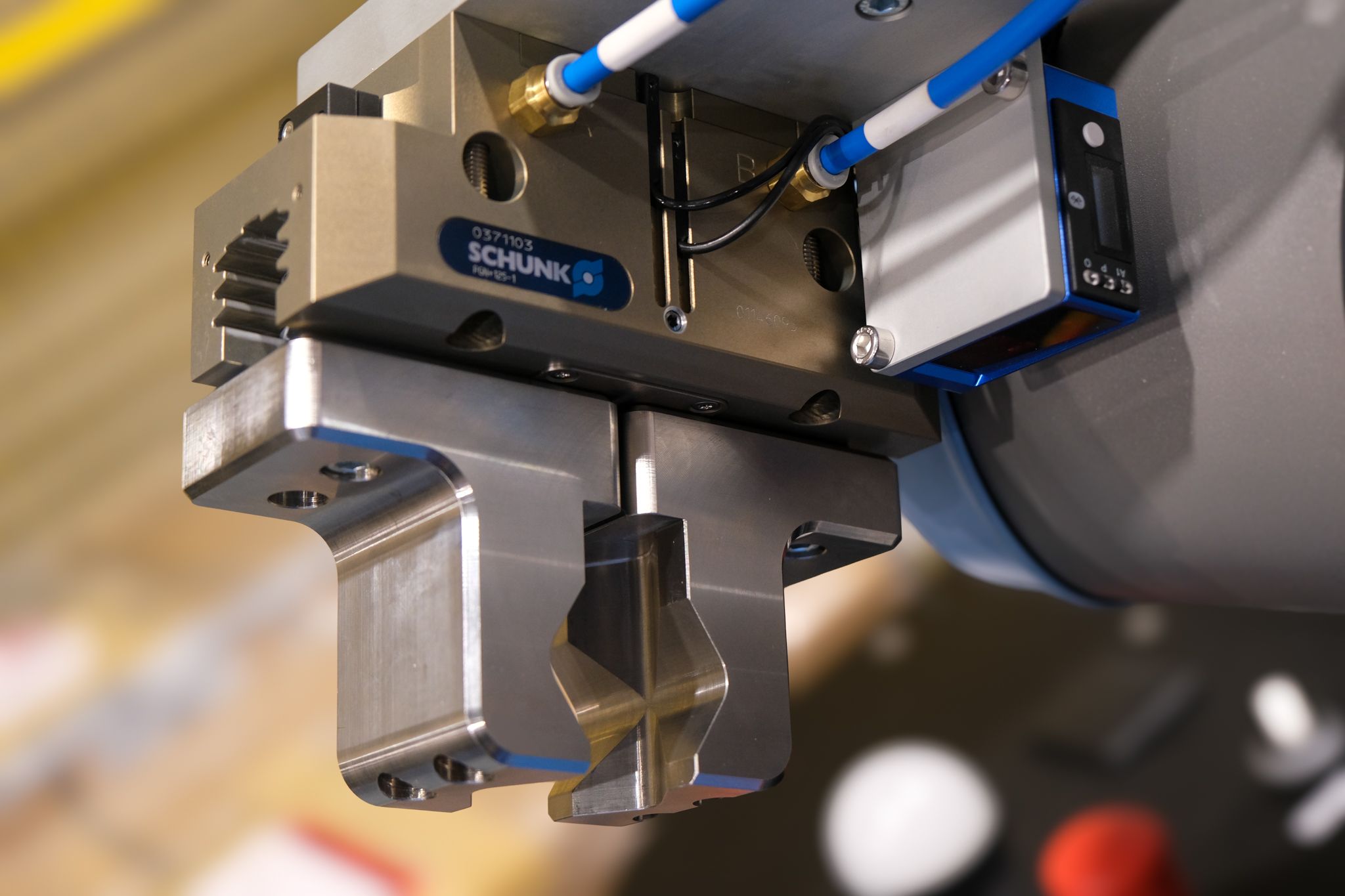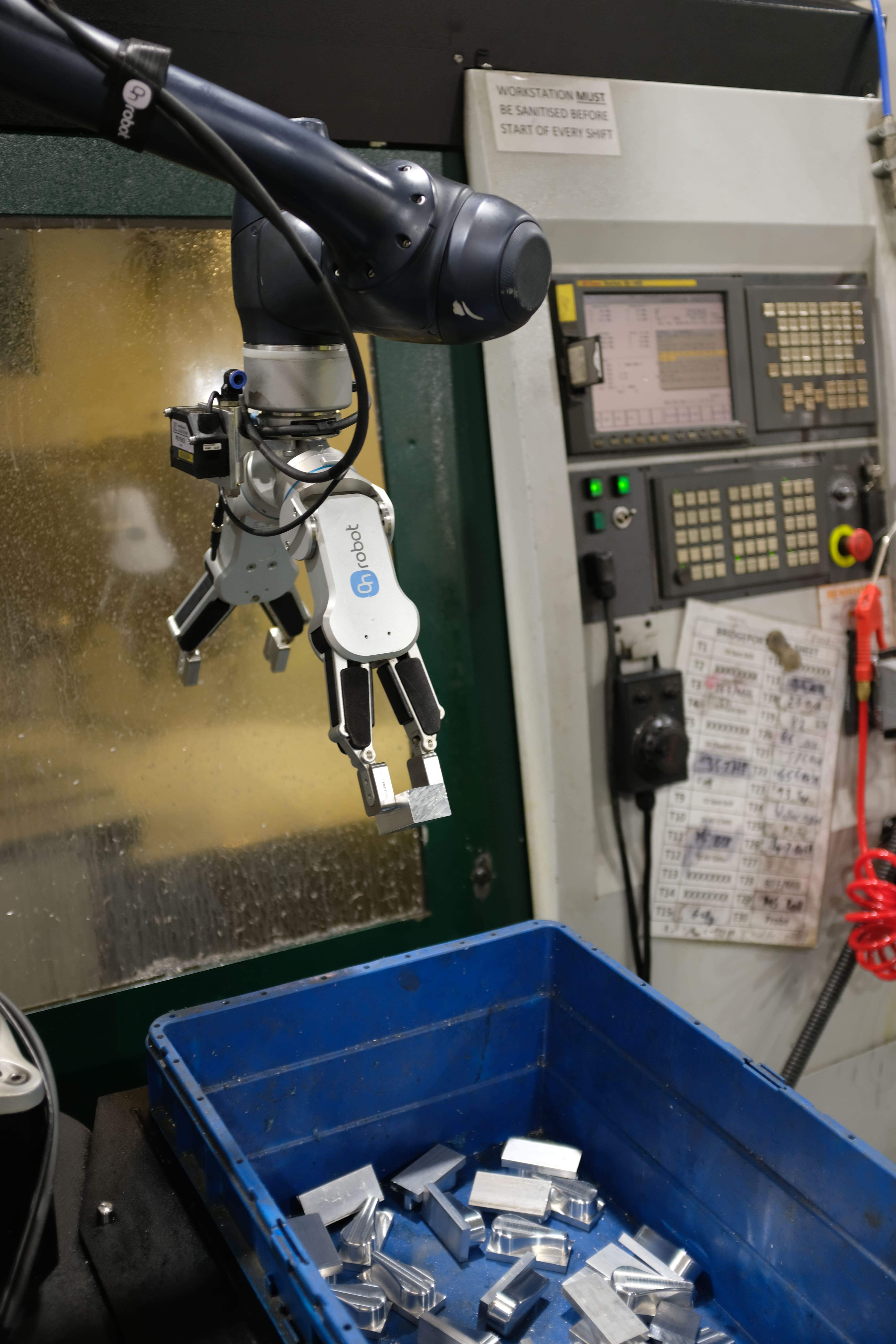Finding the Right Tool for the Task: EOAT for Collaborative Robots
The secret to automation success lies in the tools a cobot uses. Provided they have the correct EOAT, also known as end of arm tooling, collaborative robots can perform a wide and varied range of tasks.
Without an EOAT, a cobot is simply a machine standing idle. However, when the right EOAT is integrated, a cobot becomes an invaluable asset to your company. Whether it’s for precision assembly, welding, or quality inspection, finding the right tool is fundamental to the success of your cobot and opening up new opportunities for automation.
With countless EOAT available, it can be overwhelming finding the best and most appropriate one for the task at hand. Cobots Online are here to help you identify some of the most popular tools to unleash collaborative robots automation potential.
What Is End of Arm Tooling (EOAT)?
End of arm tooling refers to numerous different tools that can be attached to the end of a cobot’s arm. They significantly change how cobots work, from handling small delicate components, to moving heavy objects, greatly helping to increase production capabilities. Essentially, EOATs are what make cobots highly adaptable to a wide range of tasks across the production line.
A good way to think of EOAT is as the hand of your cobot. Just like we use different tools for various tasks, end of arm tooling makes it possible for cobots to interact with its environment and take on any task you need it to. EOATs enable your cobot to be as versatile and efficient as your production line needs them to be. They are not just important, they are essential for successful automation.

Types of End of Arm Tooling
There is no single right tool. There is simply the right tool for the task.
By understanding the range of EOAT available, cobots can take on virtually any task to maximise efficiency and productivity. These tools are constantly developing with the advancement of cobot technology, opening up opportunities to teach cobots new applications.
A range of tools are currently available to support production across a variety of industries:
Grippers - allowing cobots to pick up, manipulate and hold objects, grippers give cobots the strength of an arm intertwined with the dexterity of a hand. There are a range of grippers suitable for different tasks, including finger grippers, vacuum grippers, and magnetic grippers. These EOATs allow manufacturers to automate essential areas of the production line, from assembly to inspection, machine tending to pick and place.
Sanders - sanding tools provide a complete surface finishing solution, providing cobots the ability to polish, sand, and deburr surfaces. Built-in sensors ensure that the cobot applies the exact same force, in turn delivering consistent quality.
Welding - EOATs make it possible to automate most welding processes, capable of delivering a range of techniques. They perform with high levels of precision and can rapidly weld multiple parts with accuracy to increase productivity.
Suction - when a task requires a gentle touch and precision placement, suction cups use vacuum technology to attach to objects and lift them without leaving a mark. Suction EOATs are ideal for handling glass, metal sheets, or any item where gripping could cause damage.
Screwdriving - cobots can take on the monotonous task of screwing with EOATs, assembling products autonomously and precisely. Capable of adapting to a wide range of screw sizes and lengths, screwdriving tools ensure quality and consistency.
Sensors - some tasks require higher sensitivity, which is where force and torque sensors come in. They provide accurate force and torque measurements to automate complex processes, allow cobots to perform sensitive tasks and prevent damage to the workpiece
Cobots are quick to adapt to new tasks, which can be enhanced by tool changers. Automatic tool changes allow cobots to swap between different EOAT during different phases of production, meaning they can use multiple tools and swap them autonomously. With tool changers, cobots become even more versatile and multifunctional ready to take on any job it is tasked with.
While there are a wide range of tools for cobots to use, sometimes more specialised work needs to be undertaken. This is where bespoke EOATs come in. These tools are designed and tailored to carry out specific tasks, ensuring cobots can handle tasks with expertise and precision. Cobots Online have the specialties to create bespoke EOAT for any work cell, designing, manufacturing, assembling, and testing them in-house to ensure they meet the highest quality standards.

Selecting the Right EOAT
When it comes to choosing the appropriate EOAT for the job, there are several factors to consider:
- What task is being performed?
- What will the cobot/EOAT be handling? Single items or a mix?
- What type of material, shape, size and weight are the items you need the tool to handle?
- What environment does the EOAT need to operate in?
Cobots and EOATs are highly adaptable and will be able to handle any task you send their way, but it is important to identify the task you are trying to solve to find the best solution. EOATs are not just accessories to cobots, they are essential for successful automation.
Cobots Online’s in-house experts are always on hand to help you find the best tool for the task. We are proud of the excellent service we provide our customers at every stage of their automation journey. Our team has years of specialised experience and are always on hand to answer any questions you may have. We’re here to ensure your cobots are successful with the right EOAT solution from day one.
Contact our team to discuss your application and automation requirements.
